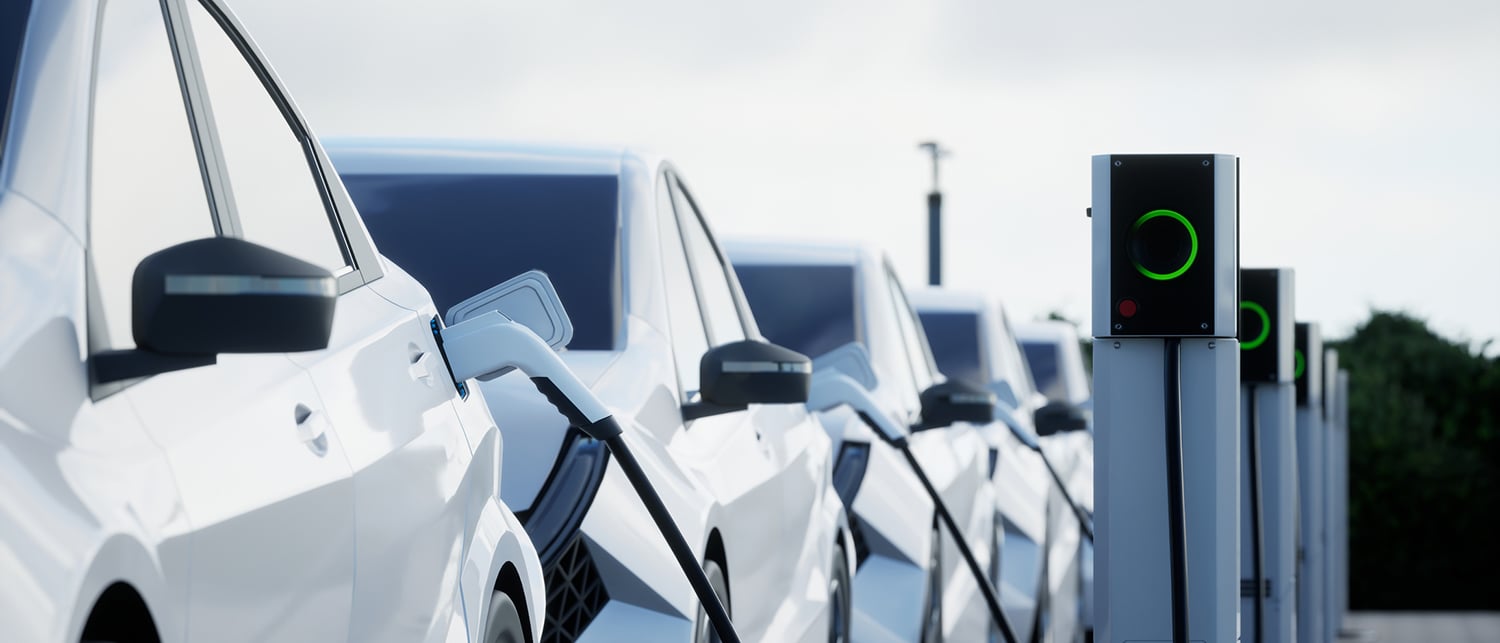The automotive industry is transforming as the world increasingly embraces electric vehicles (EVs). These vehicles offer numerous benefits, including reduced carbon emissions, lower operating costs, and enhanced performance. Moreover, they are more cost-effective over time, requiring less maintenance than traditional internal combustion engine (ICE) vehicles. With advancements in battery technology, government incentives, and expanding charging infrastructure, the adoption of EVs is accelerating globally. Enhanced battery performance and a growing variety of EV models further contribute to their growing appeal among consumers and businesses.
However, it’s crucial to recognize that while EVs offer many benefits, they also come with certain risks. Whether you’re a business owner managing a commercial fleet or an individual using an EV for personal purposes, it’s important to understand the associated risks and the safety measures needed to manage them effectively. Here, we outline the different types of EVs and charging stations, along with risk mitigation measures to help you reduce the likelihood of EV-related incidents.
Types of electric vehicles
Understanding the different types of EVs can help in assessing specific risks and benefits:
- Battery Electric Vehicles (BEVs): BEVs are fully electric vehicles powered by rechargeable batteries, producing zero tailpipe emissions.
- Plug-in hybrid electric vehicles (PHEVs): PHEVs combines an internal combustion engine with an electric motor and battery, allowing for limited electric-only range.
- Hybrid electric vehicles (HEVs): HEVs use both an internal combustion engine and an electric motor but cannot be plugged in; they recharge the battery through regenerative braking.
- Fuel cell electric vehicles (FCEVs): FCEVs use hydrogen fuel cells to generate electricity for the motor, emitting only water vapor.
- Light electric vehicles (LEVs): LEVs include small, low-speed vehicles like e-scooters and e-bikes, commonly used for short-distance travel.
Charging levels of EVs
EV charging is categorized into three levels. Each level has different charging speeds and equipment:
- Level 1: Charging requires no equipment installation and utilizes a standard 120-volt AC (alternate current) outlet to charge the vehicle. This is typically used for overnight or extended charging as it’s the slowest charging method. One hour of charging provides approximately 8 km of driving range.
- Level 2: Charging stations utilize a 240-volt AC power source. Due to the higher voltage, they also require installation of special equipment to provide a higher level of safety. Level 2 charging systems are typically found at public charging stations, workplaces, and homes. One hour of charging provides approximately 30 km of driving range.
- Level 3: Direct current fast charging (DCFC) or “fast charging” stations require a 480-volt DC (direct current) external power source. These stations can charge an empty battery to 80 per cent in roughly 30 minutes and are the EV equivalent of a gas station. One hour of charging provides approximately 250 km of driving range.
Fire risks of EVs
While EV fires are less frequent than those in ICE vehicles, they can be more challenging to extinguish. EV fires are often caused by thermal runaway in lithium-ion batteries, triggered by short circuits, manufacturing defects, overcharging, or physical damage.
Thermal runaway is a chain reaction that increases temperature, causing more heat and potentially leading to a fire. This reaction can spread rapidly, making EV fires intense and long-lasting. EV fires burn hotter and require much more water to extinguish, sometimes up to forty times more than ICE vehicle fires. These fires can also reignite hours or even days after an incident. The top causes of EV fires include:
- Battery and charging system malfunctions
- Impact or collision damage
- Manufacturing defects
- Overheating of battery
- Electrical or component failures
- Improper modification or repairs
- Improper battery handling or maintenance
- Charging station equipment malfunctions
Risk mitigation measures for EV charging
To help reduce the risk of incidents when charging your EV, consider the following measures:
- Identify potential fire hazards before installing EV chargers.
- Ensure there is adequate space between charging bays and choose locations that minimize the stretching of cables. Implement proper cable management systems, such as cable trays and covers, to minimize trip hazards.
- Place chargers in areas with adequate lighting and security to prevent vandalism to equipment.
- Install, inspect, test, and maintain charging systems in accordance with local regulations and the manufacturer’s guidelines.
- Use curbs or bollards to protect chargers from vehicle impact.
- Operate chargers on a dedicated circuit, separate from the main circuit, ensuring it can handle the electrical load.
- Label electrical isolation points clearly for safe shutdowns.
- Ideally, place charging stations outside. If indoor installation is necessary, ensure the area has automatic fire detection systems, sprinkler protection, and proper ventilation to remove smoke and heat from an EV fire.
- Ensure charging equipment is electrically interlocked to automatically disconnect upon fire detection, sprinkler activation, ventilation, or electrical malfunction.
- Develop and communicate an emergency response plan specific to EV-related incidents, including evacuation procedures and emergency procedures on how to deal with an EV fire.
- Post clear charging instructions and warning signs around charging stations and provide clear markings to indicate safe areas for pedestrians and vehicles.
- Conduct annual infrared thermographic scans of the electrical equipment to help identify possible electrical faults.
- Place fire extinguishers in accessible areas near charging stations.
Cyber security risks
EVs have become more vulnerable to cyber attacks as they are often connected to the internet for monitoring, charging, and software updates. This can expose them to risks like unauthorized access, malware ransomware, and denial-of-service (DOS) attacks. Hackers could potentially access personal information through mobile apps or public charging stations.
Here are a few preventive steps to avoid cyber attacks:
- Keep your software updated: Regularly update your EV’s software and firmware. Make sure updates are done under a trusted and secure network, whether at home or work.
- Use strong authentication: Implement strong multi-factor authentication (2FA) to prevent unauthorized access to your vehicle’s systems.
- Encrypt your data: Ensure that all communication protocols used by your EV are encrypted to protect your data.
- Separate networks: Segregate the charging station network from the main company network to prevent cyber attackers from accessing sensitive information.
- Regular backups: Conduct regular backups of critical data related to your EV and its charging network to ensure quick recovery in case of a cyber attack or system failure.
- Monitor for intrusions: Implement Intrusion Detection and Prevention Systems (IDPS) to detect and prevent any suspicious activity.
- Stay educated: Provide ongoing education and cyber security awareness training for everyone who uses the EV and its charging systems.
Ensure you’re protected
Understanding and mitigating the risks associated with electric vehicles can help ensure a safe driving experience. Regular maintenance, proper installation of charging systems, and awareness of cyber security threats are essential. To learn more about risk mitigation techniques, visit our blog.
This blog is provided for information only and is not a substitute for professional advice. We make no representations or warranties regarding the accuracy or completeness of the information and will not be responsible for any loss arising out of reliance on the information.







